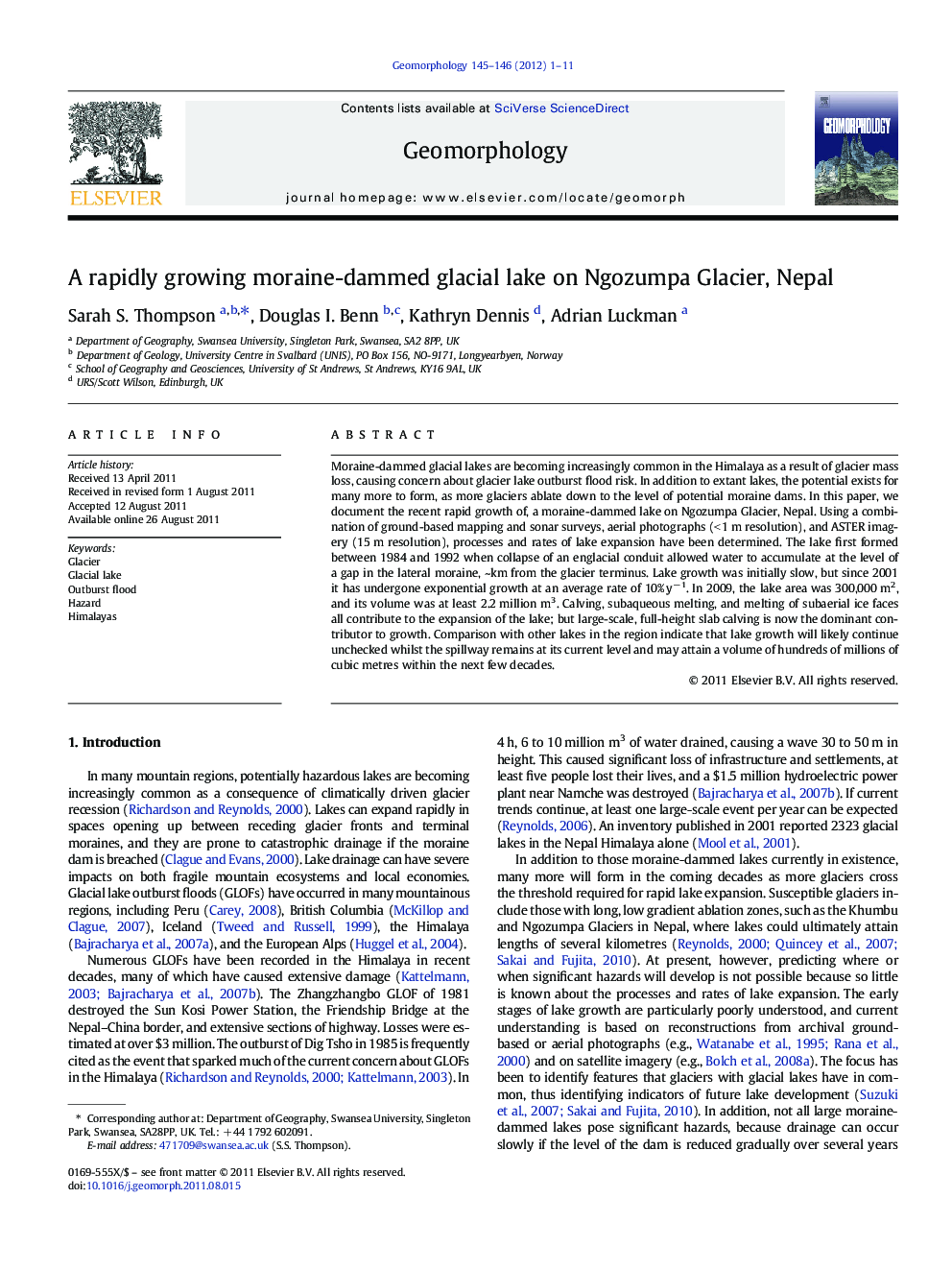| Article ID | Journal | Published Year | Pages | File Type |
|---|---|---|---|---|
| 4685276 | Geomorphology | 2012 | 11 Pages |
Moraine-dammed glacial lakes are becoming increasingly common in the Himalaya as a result of glacier mass loss, causing concern about glacier lake outburst flood risk. In addition to extant lakes, the potential exists for many more to form, as more glaciers ablate down to the level of potential moraine dams. In this paper, we document the recent rapid growth of, a moraine-dammed lake on Ngozumpa Glacier, Nepal. Using a combination of ground-based mapping and sonar surveys, aerial photographs (< 1 m resolution), and ASTER imagery (15 m resolution), processes and rates of lake expansion have been determined. The lake first formed between 1984 and 1992 when collapse of an englacial conduit allowed water to accumulate at the level of a gap in the lateral moraine, ~km from the glacier terminus. Lake growth was initially slow, but since 2001 it has undergone exponential growth at an average rate of 10% y−1. In 2009, the lake area was 300,000 m2, and its volume was at least 2.2 million m3. Calving, subaqueous melting, and melting of subaerial ice faces all contribute to the expansion of the lake; but large-scale, full-height slab calving is now the dominant contributor to growth. Comparison with other lakes in the region indicate that lake growth will likely continue unchecked whilst the spillway remains at its current level and may attain a volume of hundreds of millions of cubic metres within the next few decades.
► The evolution of a moraine-dammed lake on Ngozumpa Glacier, Nepal is documented. ► The lake has undergone exponential growth since 2001. ► Full-height slab calving is now the dominant contributor to growth. ► In 2009, the lake area was 300,000 m2, and its volume was at least 2.2 million m3. ► Rapid expansion will continue in the coming years.
